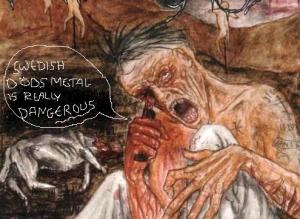Filed under: brutal memoirs, death metal, gigs, Greece, people | Tags: concerts, David Blomqvist, Dismember, Mylos xylourgeio, Thessaloniki, vinyl records, Where ironcrosses grow
The second time I saw Dismember live was in 2007 when they played the Mylos-Xylourgeio club in Thessaloniki. It was a great night which I remember every time I listen to Dismember’s Where ironcrosses grow (2004). Just like so many things, this album has come to mean so much more than what it was intended by the band when it was released. It is the album that marked the short-lived return of Cabeza, and that was awesome for a fan like myself who loved Richard’s contributions in the past. It also marked the return of Dan Seagrave’s art on a Dismember album after 13 years. It is also a piece of memorabilia, invested with the memory of the Dismember gig and the whole experience surrounding it.
I used to live in Piraeus, and Dismember were scheduled to play almost 500 kilometers away, in Thessaloniki. A friend and I decided to do the 6-hour trip by train to the gig. Whilst waiting at the train platform my friend rang me up to say that he could not make it because there was a chance for him to get laid… After bollocking him thoroughly and briefly considering canceling the trip, I decided to go by myself. Among the stuff I listened to during the trip was Dismember’s Indecent and Obscene (1993) and Entombed’s Clandestine (1991), which I had recorded in the same cassette-tape.
Upon arriving, I did what I always used to do in Thessaloniki, that is, visiting all record stores in the vicinity. Alone, a local record store dedicated to metal, was one of my stations on that day, and I ended up buying Where ironcrosses grow on vinyl. I also had it on CD at that point, but the vinyl version looked so beautiful, plus I thought I might be able to get the band to sign it at the gig. David Blomqvist, Dismember’s guitarist, ended up signing both the record and the cassette-tape!
The gig took place in front of a small crowd of no more than a hundred people I would say. The band played a set representative of its entire career – with the exception of Hate campaign (1999) – focusing mostly on its formative years, with songs like “Deathevocation”, “Override the overture”, “Soon to be dead”, “Skin her alive”, “Pieces”, “Fleshless”, “Skinfather”, “Dreaming in red”, “On frozen fields”, “Casket garden”, “Of fire”, “Let the napalm rain”, “Tragedy of the faithful”, and only “Autopsy” off the latest album, which at the time was The god that never was (2006). Fred had just quit the band, so Thomas was the drummer. That put a dampener on the experience for me, to some degree. Anyway, after the gig was over the organisers took the band to a local club which, as far as I can remember (I was drunk by that point), did not play metal music, and some of us tagged along. There, it was both awesome, ‘cos I got to talk to David, Tobias and Martin, and a bit uncomfortable at the same time, as I felt extremely self-conscious; these people were my music heroes, and I didn’t know how to behave. I remember asking David who came up with the main riff of “Case # Obscene“, and he told me it was Fred. I don’t remember much more apart from leaving a while after David had left (maybe 15-20 minutes). As I was walking along Tsimiski road I saw David walking the opposite direction towards me and I waved at him. It turned out he got lost looking for his hotel and he didn’t want to take a cab for fear of being ripped-off. I pointed him to the right direction (I hope I did) and thanked him for the awesome gig and he thanked me back for the support. That night I slept at the entrance of a building ‘cos I had spent all my money on drinks and records, and I couldn’t afford to rent a room.
Filed under: death metal, Heavy metal, people, popular music | Tags: Alex Marquez, Anders Schultz, benediction, Brian Harvey, Dark Funeral, Dave Lombardo, Deeds of flesh, Dismember, dying fetus, Ed Warby, Fred Estby, Gorefest, Holy Terror, Janne Saarenpää, Joe Mitchell, Kevin Talley, King Diamond, Lock up, Malevolent creation, Mike Hamilton, Mikkey Dee, Nick Barker, Nils Fjellström, Paul Bostaph, Paul Brookes, Pig destroyer, Slayer, The crown, Unleashed
In my early contact with metal as a teenager drums were of tertiary importance compared to guitar and voice. My first love was Iron Maiden, and although over the years I came to appreciate Clive Burr’s and Nicko McBrain’s skills and contribution to Maiden’s sound, my untrained teenage ear could not appreciate the nuances. My second love was Dio, and just like with Maiden what I fell in love with was the voice and the guitar-playing. I obviously enjoyed listening to Appice’s hard hits, McBrain’s speed on songs like “Deja vu“, I remember falling in love with Ulrich’s fills on “For whom the bell tolls“, or Columbus’s double-bass attack on “Black wind, fire and steel“, but I did not start really noticing the drums until I started listening to thrash, and specifically when I listened to Reign in blood by Slayer. After that, and the more my taste would gravitate towards extreme metal the more attention to the drumming I would pay. Who doesn’t like a great drum break in the middle of a song (*a future post is in order*), or an awesome drum intro?! Through memory work (so, simply by trying to remember) I came up with many awesome drum intros that have stayed with me throughout my life as a metal fan, and after subsequent filtering (as a result of which amazing songs by Hypocrisy, Judas Priest, Death, Xentrix, Ozzy and Kreator, among others, were left out) I present 15 of them here in chronological order.
 1. Slayer – Epidemic (1986)
1. Slayer – Epidemic (1986)
Reign in blood blew my mind and continues to blow my mind no matter how many times I’ve listened to it. It’s funny how, as years go by and new trends in metal emerge, many younger people are no longer impressed by this masterpiece (which is something that I once thought impossible). “When was the last time you truly listened to Reign in blood?”, asks Gavin O’Connor. Seriously, Gavin O’Connor? Still, I would imagine for most people, it is a guilty displeasure not liking this absolute masterpiece and they wouldn’t dare admitting it (as opposed to Gavin who owns his opinion, is proud of it, and so I can make fun of him for being a poser who only listens to “Angel of death” and “Raining blood”). “Epidemic” has always been one of my favourite songs off Reign in blood, as it has a different groove to the dominant skank beat throughout the album. The drum intro has a lot to do with how much I like this song. Whenever I think of a drum intro this is honestly the first song that comes to mind. Nowadays, and after three decades of extreme metal drumming, this intro sounds quite “primitive”, but when I first heard it I would just play it over and over again, for several times before I continue with the rest of the song. Nothing compares to Dave Lombardo‘s intense and quite instinctive old school drumming massacre. The simply devastating drum sound captured on tape by Rick Rubin is not bad either.
 2. King Diamond – Welcome home (1988)
2. King Diamond – Welcome home (1988)
Mikkey Dee, now famous for being the drummer for Motörhead for almost 25 years, used to be in King Diamond. With him the King released some of his best albums (and my two personal favourite, namely Fatal portrait and Conspiracy), and I actually remember seeing or reading an interview with King Diamond where he said that Mikkey has been sorely missed (I personally think that Snowy Shaw did an awesome job as well). Indeed, the impressive drum performances in King Diamond’s early albums compared to the almost mechanical drumming in this last few albums is like comparing night and day. “Welcome home” is a masterful track off Them, and the intro is one of the most memorable and classy drum parts I can think of. Overall, this song represents the pinnacle of King Diamond’s progressive dimension. Agressor did an accurate cover of this song on their Medieval rites (1999) album, although the drum intro is neither entirely accurate nor has the feel of the original.
 3. Holy Terror – No resurrection (1988)
3. Holy Terror – No resurrection (1988)
Holy Terror released two albums in the late 1980s, at a time when thrash was still alive and well but slowly losing ground as the first death metal albums, as well as the more extreme thrash bands of Germany, began to surface. The second album by Holy Terror is a minor thrash masterpiece and this song is a testament to that. Their peculiar style of metal that combined traditional heavy metal melodies and singing, with rougher and at times growling vocals, super fast riffs and drums, deserved more recognition in my opinion. Joe Mitchell‘s expertly executed super fast beats perfectly complement the super-fast vocal delivery. The intro to this song is an all-time favourite, and is the perfectly manic start for a perfectly manic song. I have been listening to it since my teenage years and it still does not fail to excite me. They don’t make them like this anymore.
 4. Malevolent Creation – Coronation of our domain (1992)
4. Malevolent Creation – Coronation of our domain (1992)
Alex Marquez gave his best performance on Malevolent Creation’s Retribution. His contribution on this album cannot be overestimated, and never before or after did Malevolent have such a beautiful drum sound and playing, and orchestrations. This drum intro is probably the best out of all the intros in this list. This is the definition of finesse in drumming. I struggled on whether I should include this song here. Malevolent Creation has been the home to some racist scum throughout its history, so they are not welcome in this blog. At the same time, I thought it would be unfair to erase Marquez’s contribution because he happened to be in a band which later on in its career (when Marquez was not part of it anymore) became openly racist.
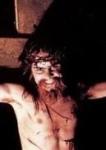 5. Dismember – Fleshless (1993)
5. Dismember – Fleshless (1993)
This is an extremely simple fast single stroke drum roll (I think so) spread across two toms, opening one of the best songs in one of the best albums in the history of music (yes, not only death metal). One of the reasons I love it so much is because to me this intro is like saying “get ready for some non-stop relentless beating”, and indeed this is exactly what follows throughout the album. Remember, this is not a playlist with the “best” drum intros, but rather my favourite drum intros, and this is definitely one. I simply adore the drum sound on this album, and Fred Estby‘s playing is really exciting. Indecent and obscene is probably my all-time favourite death metal album, and Fred’s playing is one of the reasons.
 6. Gorefest – Peace of paper (1993)
6. Gorefest – Peace of paper (1993)
It’s no big surprise that all of the songs on this list come from albums characterised by great drum performances. In both False (1992) and Erase (1993) Ed Warby gives lessons in extreme metal drumming. His sound is clear, he hits hard, and his blastbeats are a force of nature. “Peace of paper” is an astonishing song off an amazing album, and it is also the song where Warby goes crazy with his snare-kick gymnastics. The drum intro is not anything special, but I love it. I think that his performance in these two albums opened up doors for him, as I recall seeing his name in many projects over the years. Gorefest did a very impressive comeback in the mid 2000s and then unfortunately folded again, and in those two comeback albums Warby also did an amazing job.
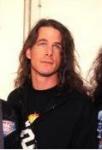 7. Slayer – Killing fields (1994)
7. Slayer – Killing fields (1994)
Divine intervention is a galore of outstanding drum work by Paul Bostaph. Quite honestly, when I bought this album I could not believe how someone can play like this, and to this day I consider Divine intervention a masterpiece with state-of-the-art drumming. This album is chock-full of drum highlights, and apart from this song, “Sex, murder, art” and “Serenity in murder” are personal favourites. There is no doubt that Paul knew that filling Lombardo’s shoes would be hard, mostly in terms of acceptance by the hardcore fans rather than actual performance, and did his absolute best to prove himself with this album. In my opinion, the intro of “Killing fields” is one of the heaviest and attention-grabbing moments in metal history.
 8. Benediction – The grotesque (1994)
8. Benediction – The grotesque (1994)
Benediction is not a band known for its virtuoso musicianship. It is known, however, for its absolutely awesome and unique-sounding death metal. “The grotesque” is one of Benediction’s best songs and it comes from the Grotesque/Ashen epitaph EP. This EP marked the departure of Ian Treacy, Benediction’s original drummer, whose improvement from Subconscious terror (1990) to Transcend the Rubicon (1993) was nothing short of stellar, and the short-lived collaboration with Paul Brookes (who has been very ridiculously photoshoped into the photo of the band on this release). I personally prefer Treacy, who has also provided some really cool drum parts, but nevertheless, Brookes offers a very memorable drum intro to this beast of a song.
 9. Unleashed – In the name of god (1995)
9. Unleashed – In the name of god (1995)
“In the name of god” starts with a very simple double stroke roll, yet constitutes an extremely effective drum intro which has always stayed with me. The fact that it opens one of the catchiest songs in death metal history, composed by Fredrik, obviously adds to the importance of this drum intro, but there is no doubt that Anders Schultz‘s contribution to Unleashed’s sound is significant (also check out the awesomely placed double bass à la Slayer at the end of the song). Victory is, in my opinion, the last great album by Unleashed, and it is not a coincidence that it is also the last album with Fredrik Lindgren. He is one of the composers that is missed in the death metal genre.
 10. Dying Fetus – Justifiable homicide (2000)
10. Dying Fetus – Justifiable homicide (2000)
1999 was the year my friends and I found out about the then new wave of North American brutal death metal. A fiend of mine got hold of three awesome cassette-tapes; one with Deeds of flesh‘s Trading pieces (1996) and Inbreeding the anthropophagi (1998), one with Nile‘s Among the catacombs… (1998), and one with Dehumanized‘s Prophecies foretold (1998) and Dying Fetus‘s Purification through violence (1996). When Destroy the opposition came out we didn’t listen to anything else for a month. This is probably the least interesting song on the album, but what a great and memorable intro! Kevin Talley is a great drummer hailing from the American brutal death metal underground who has rightfully been recognised as one. His drumming on albums like Killing on adrenaline and Destroy the opposition are unbelievable. Unfortunately, in my opinion, the separation of Jason and Kevin from Gallagher resulted in inferior subsequent output from both Dying Fetus and Misery Index. Anyway, this whole album is a drummer’s pleasure.
 11. The Crown – I won’t follow (2000)
11. The Crown – I won’t follow (2000)
The Crown has always been a hit and miss band in my opinion. I never liked any of their albums in their entirety, just individual songs, and if I had to pick a favourite album I would choose Hell is here (1999). This song comes from Deathrace king, an album from which I worship two songs and the rest of them I listen to once every ten years or so. “I won’t follow” is one of the songs I worship, and the other is the inimitable “Back from the grave”. Janne Saarenpää‘s style is very intense and out-of-control and often reminds me of Chris Witchhunter from Sodom (I’m thinking of “Baptism of fire”). This is the definition of in-your-face extreme metal drumming of the type that inspires kids to pick up drumsticks and learn to play.
 12. Deeds of Flesh – Master of murder (2001)
12. Deeds of Flesh – Master of murder (2001)
Mike Hamilton‘s stint with Deeds of Flesh started with an album (i.e. Mark of the legion) which, for me, marked the creative downfall of the band. However, just like the drummers that preceded him, Hamilton’s drumming is amazing, and this song is a case in point. A beautiful, yet cold and lifeless, phrase composed of super fast double strokes and double bass, introduces an awesome riff. The way Hamilton switches from the hi-hat to the ride cymbal during the blastbeats, and the effect this has on the riff is also great. Later on in their career Deeds of Flesh tried to reinvent themselves and switched to super-technical death metal and, in my opinion, lost their distinctiveness that is still present in this song.
 13. Pig Destroyer – Snuff film at eleven (2001)
13. Pig Destroyer – Snuff film at eleven (2001)
Just like Dying Fetus’s Destroy the opposition, Pig Destroyer’s Prowler in the yard was a game changer in the world of extreme metal. Brian Harvey provides super fast blastbeats, grooves, and insane drum fills. This song is one of the most death-oriented songs on the album, and has such an awesome drum intro, representative of the musical and lyrical insanity that reigns throughout the album. What contributes to the awesomeness of this intro is that it does not lead to a fast beat but a tensely controlled slow beat. Harvey’s performance on the next album (i.e. Terrifyer) is also stellar. Having a drummer like this at one’s disposal is an amazing privilege, because it gives one absolute freedom to write anything they want, no matter how fast and complex.
 14. Lock Up – Feeding on the opiate (2002)
14. Lock Up – Feeding on the opiate (2002)
Nick Barker is one of those drummers who make extremely fast drumming seem easy. I fell in love with his drumming when Cradle of Filth‘s Dusk and her embrace came out, and I loved him even more in Lock Up, although his repertoire in the latter is much more limited. His performance with Cradle of Filth rightfully opened doors for him as over the years he has played with many prominent bands. This is actually one of the best album intros ever, and I cannot believe that I forgot to mention it in the respective post I wrote a few years ago. Overall, Hate breeds suffering is my favourite Lock Up album too. Bill Hicks’s inspiring statement, “Play from your fucking hearts!”, sampled at the beginning of the song is also genius.
 15. Dark Funeral – The eternal eclipse (2016)
15. Dark Funeral – The eternal eclipse (2016)
The final entry in this list comes from a recent album, namely Dark Funeral’s very impressive Where shadows forever reign. Dark Funeral has a history of great drummers, including the brilliant Matte Modin (who offered devastating drumming for Defleshed back in the day). In this album the drums are provided by Nils Fjellström, another master of inhuman speed in drumming (check out videos of him performing live with the band on YouTube, you won’t be disappointed). “The eternal eclipse” is my favourite song off this album, and the drum intro is perfect.
Filed under: death metal, horror literature, Is this where I came from? | Tags: Clive Barker, Dismember, Hallucigenia, massive killing capacity, Richard Cabeza, The great and secret show
The newest installment in this series of posts is about a band and an author I admire a lot. I have loved Dismember since my early teenage years in the mid 1990s, and Clive Barker is an author who I admired first as the writer/director of the first Hellraiser film, one of the absolute masterpieces of horror cinema, and then as a unique horror writer. The song “Hallucigenia” by Dismember was probably influenced by Barker’s book The great and secret show.
 Clive Barker – The great and secret show (1989)
Clive Barker – The great and secret show (1989)
The great and secret show is the first part of an unfinished trilogy known as “the art”. In this fantasy/horror Barker weaves a complex story about the battle between two evolved beings (that once were human) over the space (i.e. Quiddity) between our world (i.e. Cosm) and the afterlife (i.e. Metacosm). One of the two beings is the Jaff (or, his human name, Jaffe), who is drunk with power and has evil intent, and the other one is Fletcher, who wants to protect Quiddity from the Jaff. The Jaff has the ability to extract from people their primal fears, materialised as monsters that he calls terata (the Greek word for monsters), and Fletcher has the ability to bring into existence people’s fantasies, what he calls hallucigenia. By raising Hallucigenia he forms his “army from the fantasy lives of the ordinary men and women he met as he pursued Jaffe across the country” (p.64). At some point in the story (after page 367) the fantasies of many of the residents of Palomo Grove, touched by Fletcher’s power, come into existence. Many of those fantasies are of sexual nature, leading many of the people isolating themselves in their homes reveling in sexual debauchery with their hallucigenia.
 Dismember – Hallucigenia (1995)
Dismember – Hallucigenia (1995)
Dismember’s “Hallucigenia” is a song composed by Richard Cabeza, and it is one of the most fantastic songs off Massive killing capacity, and a cornucopia of references. It kicks off with a brilliant, creepy Autopsy-like melody, leading to an up-beat Venom-sounding chord progression (I’m thinking “Countess Bathory”) that is repeated during the chorus, ending in a similar way to Kiss‘s “Black Diamond”. The song title and lyrical content refer back to Clive Barker‘s The great and secret show. After reading Barker’s book and realising the connection, and after listening to this album for 23 years, the lyrics suddenly made sense! The protagonist of the song is someone who apparently fantasised about sexual debaucheries with demons. Hallucigenia refers to these fantasies coming to life.
Lyrics: “On my throne of sin, I watch the demons feed, nails cut deep into my flesh, and release my pulsing blood. Serpents dance before my eyes, and tempt the lust inside, let me taste the pain, devour me, my wicked queen! Whip me with chains of sin, let your jaws open my skin, lips and tongues licking the wounds, in ecstasy I’ll rise. Whores of hell, demons appear to feast on my flesh, bleed with me, souls forever free. Taste the pain and the desire, like a drug it’s my need, bleeding bodies, endless orgies, in carnal blasphemy.”
Filed under: death metal, Heavy metal, people, social theory | Tags: Angel of death, Dismember, Hate campaign, nazis, Reign in blood, Slayer, Thanatology
The topic of this post is something about which I have thought many times in my life as a heavy metal fan. I think that now is a good time to address this topic, given that all kinds of authoritarian ideas are increasingly entering public discourse. The ostensibly “moderate” face of nationalism/patriotism that has persisted over the centuries, despite the catastrophes it has brought about, once again emerges as nazism. So, I think now is a good time to reflect on how our favourite music has talked about the repulsive legacy of the nazis. I will do that through a textual analysis of the lyrics of two songs that deal with the topic: Slayer‘s “Angel of death”, off their album Reign in blood (1986) and Dismember‘s “Thanatology”, off their album Hate campaign (2000).
The starting point of this discussion are three ideas coming from the British and French cultural studies traditions. The first idea is that a preferred meaning is encoded in a text. This means that the lyrics of a song are structured in such a way by the author in order to convey a specific, intended message. The second idea is that the audience of the text will not necessarily decode the message in the intended way. The audience might listen to the song and misunderstand what the author meant, or might understand what the author meant and agree, or might understand and disagree. The third idea is that the type of decoding that a member of the audience will do depends on this person’s own experiences, values, cognitive frames, as well as the cultural field within which the text is encoded and decoded. For example, a heavy metal song about Cthulhu is created and intended for consumption within a cultural environment where knowledge about Lovecraft is more or less taken for granted. Within this specific cultural environment of heavy metal fandom it is more likely to understand what the author intended to say, as opposed to another cultural environment where misunderstandings are more likely to occur.
The first point I want to make from the get-go is that nazis should be represented as nothing other than vile and disgusting. The nazis are the exemplification of absolute oppression, inhumanity, and evil. In that sense, I strongly believe that there is only one way nazis should be talked about in song lyrics, and that is condemning their actions and denouncing their ideology as a disease that needs to be cured once and for all. Nazis and their contemporary manifestations as white supremacists or “alt-right”, or whatever they want to call themselves, must be crushed. It is an ideology that has discrimination and oppression at its core, and it is our duty to imagine a society where each person strives for one’s own happiness as well as the happiness of others, rather than a society where everyone strives for one’s own happiness at the expense of others.
With this in mind I will now look at the song-lyrics of the two songs I mentioned at the beginning of this post. Both songs deal with the horrors of nazi Germany. Both songs appear to be “simply reporting the facts”. There are three questions that I want to pose: Is there a problem with simply describing the crimes committed by nazis? Do the lyrics unequivocally condemn nazis? Or does the way in which the lyrics are structured favour interpretations that celebrate the nazis?
Slayer’s Angel of death
“Angel of death” is a song about Josef Mengele, a vomit-inducing puddle of diarrhea nazi doctor that conducted vile experiments and murdered many people in nazi concentration camps. “Angel of death” is widely considered Slayer’s absolute masterpiece, and has also gained notoriety due to its subject matter. The band itself has defended itself many times over the years against accusations of being nazi-friendly. This defense ranges from explanations about how “describing what happened in real life” does not equal condoning it, to pointing out the contradiction that “how can Slayer be white supremacists if one member of the band has Chilean and another Cuban origins?”.
The majority of the song-lyrics are gruesome descriptions of the crimes committed by Mengele. Four words endow the text with a value-judgement towards those crimes. These words are “sadistic” and “infamous”, both used to describe Mengele, “sickening”, used to describe nazi methods of murder, and “harmless” used to describe the victims. The adjective “pathetic”, used alongside “harmless” to refer to victims, is more ambivalent. “Pathetic” could mean both “inferior” and “sad”. Whether it is meant to stand in a relation of complementarity with, or opposition to, “harmless” is therefore unclear. “Slayer fans who want to defend the band against accusations of nazi admiration would say that the band is “educating” people about the horrors of nazi Germany. Indeed, the four words I enumerated earlier favour a reading that condemns nazis. The same people could also argue that the subject matter is used for shock-value in line with a broader tradition of heavy metal gory thematology. On the other hand, due to the ostensibly neutral character of the lyrics and the ambivalent character of words such as “pathetic” it could also be argued that a far-right reading of the lyrics is possible by a far-right segment of the audience. Where Slayer fail, in that sense, is in providing an undisputed, straightforward message that nazis are vile. In other words, are “sickening” and “infamous” adequate for sending a clear message to neo-nazis that we don’t agree with them? Probably not.
Dismember’s Thanatology
The second song I will look at is “Thanatology” by Dismember. “Thanatology” is, in a sense, a tribute to Slayer’s “Angel of death”. The subject matter is similar, in that it deals with the horrors of the concentration camps. Another parallel is that it deploys some of the adjectives used in “Angel of death”, such as “sadistic” and “infamous”. In this case, however, there is much more evidence of far-right thinking than in the Slayer song. The most problematic thing is that the lyricist deploys the language of nazis to talk about the people who were so unfairly murdered by the nazi regime, by referring to “cripples”, “retards” and “unworthy”. The only moments that could be read as a condemnation of nazis are the verse “brutal acts of infamy, never fading memories, sadistic hate campaign, in the pages of history”, the sentence “victims of nazi science suffer even to this day”, and finally, that he actually acknowledges the “holocaust”. So, do these lyrics unequivocally condemn the nazis? I would say that the lyrics are ambivalent. They could be read by people like myself, who is a fan of Dismember and who don’t want to think of their singer as right-wing scum, as an account of a horrible time in human history. But, I am afraid that it is equally possible to be read by neo-nazis as a celebration of the nazi regime, especially given the offensive and derogatory epithets used to describe the people murdered by nazis. For a band that has written some amazing lyrics about alienation, inequality, and the horrors of war (especially in Massive killing capacity), this is shameful and should not have happened! It is one of the few songs that I have struggled with, because when it came out I was already a huge Dismember fan and this song offended and disappointed me.
In the scary times we live there is no time for ambivalence. It is time to ask ourselves “which side we are on” and send a clear message to nazis, and that includes to speak against those songs that praise authoritarianism in our favourite music genres. Even if we acknowledge that interpretations vary, or that “we know better” than to be brainwashed by far-right rhetoric, we should be able to recognise the harmful potential of “neutral” or ambivalent lyrics, and shelter ourselves and others from it.
Filed under: death metal, Heavy metal, Is this where I came from?, sweden | Tags: casket garden, Deep Purple, Dismember, Love don't mean a thing, massive killing capacity, stormbringer
In this, the fifth installment of the “Is this where I came from” series of posts I ask whether Deep Purple, an English hard rock band, influenced Dismember, a Swedish death metal band, by looking at a riff that may have traveled 21 years, and the way in which it changed during this journey.
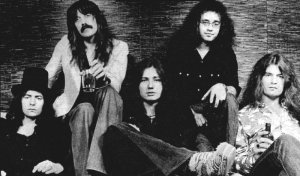 Deep Purple – Love don’t mean a thing (1974)
Deep Purple – Love don’t mean a thing (1974)
Stormbringer is the second album after Ian Gillan’s departure and David Coverdale’s arrival. Although it is definitely not the hard rock/heavy metal cornerstone that In Rock and Machine Head are, I quite like Stormbringer. It is a more laid-back, quite funky (literally) album that showcases Coverdale’s flexible voice and the band’s broad musical range. “Love don’t mean a thing” is one of the more laid back songs on the album, it’s a quite soulful, bluesy song, with some cheesy lyrics about a man who seeks a woman who is rich enough to support him. To my ears, the opening riff does not really stand out. It consists of a lead melody on a blues scale that utilises the hammer-on technique, and an accompanying background melody which is a slightly different version of the lead melody in a lower octave. No distortion is used. The background melody is the one that resembles the riff with which Dismember came up 21 years later.
 Dismember – Casket Garden (1995)
Dismember – Casket Garden (1995)
In my opinion, Massive killing capacity is one of the most perfect albums that have ever been recorded. It cannot be denied, however, that it was partially a by-product of the wider trend in death metal for more experimentation after 1993. This trend in itself was partially fueled by record companies who wanted to jump on the “death ‘n roll” bandwagon of successful albums like Entombed‘s Wolverine blues. On their DVD “Live blasphemies” Dismember talk about how Nuclear Blast (their record company back then) pressured them to become more melodic. Indeed, one can detect several hard rock and heavy metal references on this album, such as the Kiss-inspired ending of “Hallucigenia” (listen to the end of Kiss’s “Black diamond“) or the Metallica-inspired “Nenia” (listen to Metallica’s “Orion“). “Casket garden” was written by Richard, Fred and Robert. The opening riff is to a large extent a heavier, more distorted version of “Love don’t mean a thing”. The groove is extremely similar. The main difference is that Dismember don’t follow the blues progression that Deep Purple use. Every third note of the “Casket garden” riff is a pull-off back to the root note (the opposite of the hammer-on that is used between the first and second note). Another point of difference is that through its journey from the hard rock to the death metal logic, the riff was reinterpreted through the use of heavy distortion and the accompaniment of a heavy rhythm section, that contributes to establishing the rhythm the band wanted to convey. The result is a massive riff, at once extremely memorable, uplifting and exciting.
Filed under: death metal, Is this where I came from?, people, popular music, sweden | Tags: Come sweet death come blessed rest, David Blomqvist, Dismember, Fred Estby, J.S.Bach, Komm süßer Tod komm selge Ruh, Life another shape of sorrow, massive killing capacity, Matti Karki, Richard Cabeza, Robert Sennebäck
In this, the fourth instalment of the “Is this where I came from?” series of posts I discuss the influence of classical music, J.S.Bach’s music in particular, on Dismember, a Swedish death metal band. David Blomqvist, the guitarist of Dismember, was inspired by Bach to compose one of the most beautiful songs in the history of popular music.
J.S.Bach – Komm, süßer Tod, komm selge Ruh (1736)
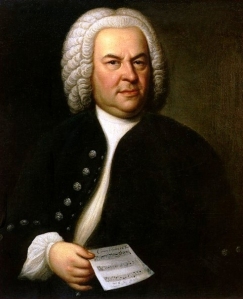 Komm, süßer Tod, komm selge Ruh translates into Come, sweet death, come, blessed rest and it is a powerful hymn about the anticipation of death and the arrival at the kingdom of heaven written by Bach for solo voice and basso continuo. Although I have loved Bach’s music since my early teens I only recently discovered this monumental piece. This is not surprising since Bach’s music to which I – being a guitarist – have mostly been attracted is his Lute suites. Although I think that each person interprets works of art in slightly different ways, I would say that in this piece, the mood that Bach envisioned for someone who longs for death is one of absolute acceptance and resolve. This mood is also reflected in the text. The deeply religious text that accompanies this piece is, according to Wikipedia, attributed to an anonymous author:
Komm, süßer Tod, komm selge Ruh translates into Come, sweet death, come, blessed rest and it is a powerful hymn about the anticipation of death and the arrival at the kingdom of heaven written by Bach for solo voice and basso continuo. Although I have loved Bach’s music since my early teens I only recently discovered this monumental piece. This is not surprising since Bach’s music to which I – being a guitarist – have mostly been attracted is his Lute suites. Although I think that each person interprets works of art in slightly different ways, I would say that in this piece, the mood that Bach envisioned for someone who longs for death is one of absolute acceptance and resolve. This mood is also reflected in the text. The deeply religious text that accompanies this piece is, according to Wikipedia, attributed to an anonymous author:
Come, sweet death, come, blessed rest! Come lead me to peace for I am weary of the world, O come! I wait for you, come soon and lead me, close my eyes. Come, blessed rest!
Come, sweet death, come blessed rest! It is better in heaven, for there is all pleasure greater, therefore I am at all times prepared to say “Farewell,”. I close my eyes. Come, blessed rest!
Come, sweet death, come blessed rest! O world, you torture chamber, oh! Stay with your lamentations in this world of sorrow, it is heaven that I desire, death shall bring me there. Come, blessed rest!
Come, sweet death, come blessed rest! Oh, that I were but already there among the hosts of angels, out of this black world into the blue, starry firmament, up to heaven. O blessed rest!
Come, sweet death, come blessed rest! I will now see Jesus and stand among the angels. It is henceforth completed, so, world, good night, my eyes are already closed. Come, blessed rest.
The video that follows is an adaptation of the piece for Organ by Virgil Fox. It is this specific rendition that resembles “Life another shape of sorrow”, the song written by Dismember.
Dismember – Life, another shape of sorrow (1995)
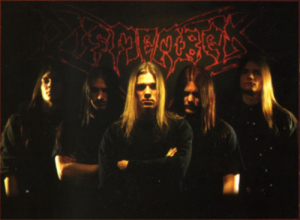 Dismember has always been my favorite death metal band. Dismember’s style developed at the same time that Entombed’s career was taking off and, because of that, Dismember has many times been seen as the “poor person’s” Entombed. I have always objected to this somewhat popular perception of Dismember’s identity and contribution to popular extreme music. For starters, I do not think that Entombed created something radically new; I do not think that such a thing as radical innovation exists. Entombed defined the Swedish death metal scene to the extent that they were undoubtedly brilliant and got picked up by an up-and-coming extreme record label (Earache), facts that led to early recognition and placement in an influential position. However, at the same time, they developed their style in close proximity with dozens of other death metal bands that existed at the time. Entombed members were not only close friends with Dismember members but also lived and practiced in close proximity to each other. Thus, I think that their styles developed in tandem rather than separately. Moreover, Dismember was a band that always had unique elements in its sound that distinguished it from its peers. Even on the debut album, but in a more pronounced way on the sophomore album, there are melodic moments and harmonies that originated in classic rock/metal and classical music.
Dismember has always been my favorite death metal band. Dismember’s style developed at the same time that Entombed’s career was taking off and, because of that, Dismember has many times been seen as the “poor person’s” Entombed. I have always objected to this somewhat popular perception of Dismember’s identity and contribution to popular extreme music. For starters, I do not think that Entombed created something radically new; I do not think that such a thing as radical innovation exists. Entombed defined the Swedish death metal scene to the extent that they were undoubtedly brilliant and got picked up by an up-and-coming extreme record label (Earache), facts that led to early recognition and placement in an influential position. However, at the same time, they developed their style in close proximity with dozens of other death metal bands that existed at the time. Entombed members were not only close friends with Dismember members but also lived and practiced in close proximity to each other. Thus, I think that their styles developed in tandem rather than separately. Moreover, Dismember was a band that always had unique elements in its sound that distinguished it from its peers. Even on the debut album, but in a more pronounced way on the sophomore album, there are melodic moments and harmonies that originated in classic rock/metal and classical music.
The song “Life, another shape of sorrow”, composed in its entirety by David Blomqvist, comes from Dismember’s third full length masterpiece (Massive killing capacity) and constitutes a prime example of Dismember’s distinctiveness. The brooding intro with the melancholic melody on top of a powerful minor chord progression very similar to Bach’s piece gives way to a section of more up-beat riff followed by redemptive harmonies in the vein of Iron Maiden. This section leads to an explosive tremolo-picking riff supported by a fast Slayer kick-snare beat. The lyrics, sung from the point of view of a person who longs for death, are sung on top of this frantic section which proposes a very different mood than the one crafted by Bach. Here, again, the desire to die is the result of vast pain and hopelessness. Dying is seen as the reasonable action in the context of a life of absolute suffering. However, while in Bach’s case the sufferer seems to be at peace with their desire to live no more, in the case of Dismember, the sufferer appears to be in agony. In the chorus, Matti Karki, the singer of Dismember, screams at the top of his lungs, “Come sweet death, let me sleep forever”. The fast tempo and soulful vocal delivery once more suggest that the person who desires to die is tormented and exhausted from living. The genius harmonised scale played on top of the words “let me sleep forever” adds extra emphasis on the experience of pain associated with living. A brief slower section momentarily interrupts the powerful emotion of hopelessness, perhaps in favour of some time to re-assess and maybe give life another chance, but quickly any hope for the value of living is discredited when the band goes back to the fast tremolo-picking section and a sorrowful guitar solo. The song closes with a repetition of the introductory section, this time played by the Organ, and a narrator saying the words, “Come, sweetest death. Come, blessed rest. And take my hand, and gently lead me on”.
Filed under: death metal, sweden | Tags: Afflicted, Arch enemy, At the Gates, best of, Carnage, Comecon, Dark tranquility, death breath, Dismember, Edge of Sanity, Entombed, Furbowl, Grave, Hypocrisy, Merciless, swedish death metal, Tiamat, Unanimated, Unleashed
Five and a half years ago I published a post in which I presented my 10 all-time favorite Swedish death metal albums. This post turned out to be the most popular one I have written so far. There have only been a few days since it was published that it did not bring in traffic. About three people read this post on an average day and it has been read 6,005 times in total.
However, given that writings are just snapshots in time, many times I feel weird when people read today things that I wrote a long time ago. That is why I decided to revisit this list and see whether I still agree with my choices five and a half years later. I decided that I agree with at least seven of my ten choices. Back in 2008, when the post was published, I had already been listening every single record on that list for more than a decade. This meant that I had a long time to reflect and settle on my tastes. Since 2008, however, several things happened which made me re-evaluate some of my choices. First of all, I discovered some Swedish death metal albums that I did not know back then. Secondly, I simply got over some records that I held in high regard in the past and appreciated more some others. Finally, even the first time around I was faced with several dilemmas regarding which records I should include in the list over others. Of course, I also discovered that certain things don’t change with time.
Seven records from the original list retain their status as all time favorite Swedish death metal albums of all time:
1. Dismember – Indecent and Obscene (1993)
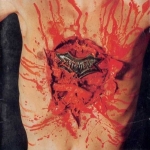 Dismember’s second full length album maintains is position as my all time favorite Swedish death metal album. For almost two decades now I have not changed my mind once about the absolute perfection of this album. There is literally not one single moment in this album that is not brilliant. Every song in this album contains riffs that other bands have not managed to match in their entire careers. As much as it is true that Skogsberg was responsible for homogenising the Swedish death sound, this album sounds different from others. By Skogsberg’s standards Indecent and obscene sounds bad, but this is the beauty of it. The bass-drum on this album is the most satisfying I ever heard in my life. In any case, the band is on fire. This is a time when there was no shortage of ideas. The built-up of songs like “Case#obscene”, “Reborn in blasphemy”, “Dreaming in red” is mind-blowing and the way all of the songs develop is orgasmic. Every time you think that a song cannot get any better something extra-ordinary happens which leaves you speechless, be it a new riff, an amazing tempo change or a vocal pattern. I am so happy this album exists…
Dismember’s second full length album maintains is position as my all time favorite Swedish death metal album. For almost two decades now I have not changed my mind once about the absolute perfection of this album. There is literally not one single moment in this album that is not brilliant. Every song in this album contains riffs that other bands have not managed to match in their entire careers. As much as it is true that Skogsberg was responsible for homogenising the Swedish death sound, this album sounds different from others. By Skogsberg’s standards Indecent and obscene sounds bad, but this is the beauty of it. The bass-drum on this album is the most satisfying I ever heard in my life. In any case, the band is on fire. This is a time when there was no shortage of ideas. The built-up of songs like “Case#obscene”, “Reborn in blasphemy”, “Dreaming in red” is mind-blowing and the way all of the songs develop is orgasmic. Every time you think that a song cannot get any better something extra-ordinary happens which leaves you speechless, be it a new riff, an amazing tempo change or a vocal pattern. I am so happy this album exists…
2. Entombed – Clandestine (1991)
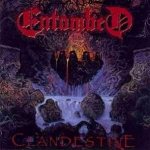 As with Indecent and obscene, Clandestine never fails to amaze me every time I listen to it, although I know by heart each single moment. The last few years, Entombed themselves seem to have re-evaluated this masterpiece (it has been documented in Ekeroth’s book that neither Nicke nor Uffe particularly liked it back in the day). I personally could not understand how anybody cannot find this album brilliant. I would love to know what was going on in the minds of Nicke and the rest of the band when they were putting these songs together; to be able to experience their unrestrained inspiration running rampant.
As with Indecent and obscene, Clandestine never fails to amaze me every time I listen to it, although I know by heart each single moment. The last few years, Entombed themselves seem to have re-evaluated this masterpiece (it has been documented in Ekeroth’s book that neither Nicke nor Uffe particularly liked it back in the day). I personally could not understand how anybody cannot find this album brilliant. I would love to know what was going on in the minds of Nicke and the rest of the band when they were putting these songs together; to be able to experience their unrestrained inspiration running rampant.
3. At The Gates – With fear I kiss the burning darkness (1993)
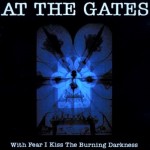 Their first album is a masterpiece of death metal with which they set the standard for the extreme musical interpretation of painful emotions such as fear of mortality and suffering. And they set the bar really high. Almost everything that happened in extreme metal since then pales in comparison, with the exception of this, their second album. This album is surreal. Each song in this album contains more ideas than entire albums by most bands. At the gates at this point look down upon the popular music canon that wants musicians to compose songs around standardised and easily identifiable structures. Instead, they write melodies which are dynamic and develop and constitute part of a coherent whole (rather than a series of individual melodies glued together). Every musical development cannot be disconnected and understood individually. An album that is one of a kind.
Their first album is a masterpiece of death metal with which they set the standard for the extreme musical interpretation of painful emotions such as fear of mortality and suffering. And they set the bar really high. Almost everything that happened in extreme metal since then pales in comparison, with the exception of this, their second album. This album is surreal. Each song in this album contains more ideas than entire albums by most bands. At the gates at this point look down upon the popular music canon that wants musicians to compose songs around standardised and easily identifiable structures. Instead, they write melodies which are dynamic and develop and constitute part of a coherent whole (rather than a series of individual melodies glued together). Every musical development cannot be disconnected and understood individually. An album that is one of a kind.
4. Grave – You’ll never see (1992)
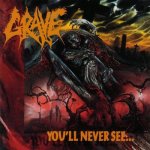 You’ll never see is another masterpiece that never gets old. Grave is known for playing pretty stripped down and brutal death metal. Jorgen’s voice is considerably more brutal than those of most of his contemporaries. The sound overall is extremely heavy. Songs stand out due to the catchiness of their lyrical ideas and the vocal patterns. How can anyone forget lyrics like “I wanna die a brutal way, instead of just fade away”, “You make me sick – chosen one”, or “oh my savior set me free, release me from my agony, grant me your eternal reich, take me to where corpses lie”. The groove of the eponymous song is out of this world and the way “Severing flesh” develops is mindbogglingly awesome!
You’ll never see is another masterpiece that never gets old. Grave is known for playing pretty stripped down and brutal death metal. Jorgen’s voice is considerably more brutal than those of most of his contemporaries. The sound overall is extremely heavy. Songs stand out due to the catchiness of their lyrical ideas and the vocal patterns. How can anyone forget lyrics like “I wanna die a brutal way, instead of just fade away”, “You make me sick – chosen one”, or “oh my savior set me free, release me from my agony, grant me your eternal reich, take me to where corpses lie”. The groove of the eponymous song is out of this world and the way “Severing flesh” develops is mindbogglingly awesome!
5. Unleashed – Shadows in the deep (1992)
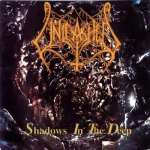 Another album to which I will always be loyal. I love every single second on this album. It’s the epitome of darkness and brutality. It has some of the best compositions by Fredrik. Fredrik was a genius of Swedish death metal, among the very few who have been true geniuses and it’s a shame he never got the recognition that he deserved. I cannot think of any other of their contemporaries for whom it could be argued that every single song they wrote was absolutely perfect. But Fredrik wrote consistently perfect songs, which were at the same time extremely personal and unique (I think he perfected his craft on Victory. It’s a shame he left the band after that album). This album also has some of Johnny’s best moments. The passion with which Johnny utters every single line of “Land of ice” has never been achieved in extreme music again. The massive riff and tempo of “Onward…” is also unparalleled in music history. The slow part on “Final silence” followed by the fast break and Johnny’s scream are one of the moments that define intensity. The eponymous song is the one that could qualify as the best song ever recorded. Simple as that.
Another album to which I will always be loyal. I love every single second on this album. It’s the epitome of darkness and brutality. It has some of the best compositions by Fredrik. Fredrik was a genius of Swedish death metal, among the very few who have been true geniuses and it’s a shame he never got the recognition that he deserved. I cannot think of any other of their contemporaries for whom it could be argued that every single song they wrote was absolutely perfect. But Fredrik wrote consistently perfect songs, which were at the same time extremely personal and unique (I think he perfected his craft on Victory. It’s a shame he left the band after that album). This album also has some of Johnny’s best moments. The passion with which Johnny utters every single line of “Land of ice” has never been achieved in extreme music again. The massive riff and tempo of “Onward…” is also unparalleled in music history. The slow part on “Final silence” followed by the fast break and Johnny’s scream are one of the moments that define intensity. The eponymous song is the one that could qualify as the best song ever recorded. Simple as that.
6. Edge of Sanity – The spectral sorrows (1993)
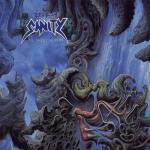 This album has always been one of my favorite and at the same time always felt a bit awkward. The reason behind this latter feeling is that this album is one of the first “classic” Swedish death albums that challenged the generic conformity of death metal. The more traditional death songs are some of the best ever recorded, each one could easily be considered the best song if they were in most death albums ever recorded. For example, imagine any album by any band that included a song like “Jesus cries”, “The masque”, “Across the fields…”, “On the other side” or “Lost”. Any one of these songs would instantly stick out from the rest! However, as I said earlier, there are some other songs which are also amazing yet play with other generic rules, such as “Feeding the charlatan”, a hardcore-punk song given a death metal twist and “Sacrificed”, an all-out gothic/new wave song. In any case, this album is God.
This album has always been one of my favorite and at the same time always felt a bit awkward. The reason behind this latter feeling is that this album is one of the first “classic” Swedish death albums that challenged the generic conformity of death metal. The more traditional death songs are some of the best ever recorded, each one could easily be considered the best song if they were in most death albums ever recorded. For example, imagine any album by any band that included a song like “Jesus cries”, “The masque”, “Across the fields…”, “On the other side” or “Lost”. Any one of these songs would instantly stick out from the rest! However, as I said earlier, there are some other songs which are also amazing yet play with other generic rules, such as “Feeding the charlatan”, a hardcore-punk song given a death metal twist and “Sacrificed”, an all-out gothic/new wave song. In any case, this album is God.
7. Comecon – Megatrends in brutality (1992)
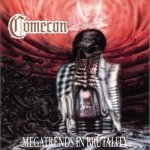 My appreciation for this album, and band overall, will never wane. The power of this album is unique, and I still think that they achieved a rare blend of Swedish death and grindcore. Also, having Petrov singing on your album is already a big plus. Having him singing some brilliantly penned lyrics along really inspired vocal patterns can lift an album to outer space. There are some amazing choruses and some amazing riffs, more akin to hardcore than death metal, but the fast slayer beat and grind throughout the album add considerably to its death metal character. Every single death metal mix-tape should include at least one of the following songs: “Wash away the filth”, “Teuton tantrums”, “Slope” and “Conductor of ashes”.
My appreciation for this album, and band overall, will never wane. The power of this album is unique, and I still think that they achieved a rare blend of Swedish death and grindcore. Also, having Petrov singing on your album is already a big plus. Having him singing some brilliantly penned lyrics along really inspired vocal patterns can lift an album to outer space. There are some amazing choruses and some amazing riffs, more akin to hardcore than death metal, but the fast slayer beat and grind throughout the album add considerably to its death metal character. Every single death metal mix-tape should include at least one of the following songs: “Wash away the filth”, “Teuton tantrums”, “Slope” and “Conductor of ashes”.
The remaining three albums (Hypocrisy‘s Final chapter, Tiamat‘s clouds and Desultory‘s Bitterness) would not necessarily be in that list. I still consider them monumental albums but not on the same league as the rest. Instead of suggesting three other albums to complete the original list I will instead suggest 10 albums, any of which could take the part of any of the previous three. Again, I will not include on purpose any other album by bands that have already been mentioned in the list. If I did that I have to confess that the list of best death metal albums would be monopolised by bands like Entombed, Dismember, At The Gates and Unleashed. In an effort to be fair to all those bands that have given us awesome music no band can be represented with more than one album in the list. So, here are the next 10 bands that I feel should be represented in a Swedish death metal “best of” list:
1. Furbowl – The autumn years (1994)
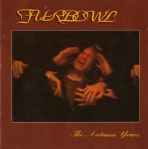 I never heard Furbowl when I was young. I discovered them through Daniel Ekeroth’s book Swedish Death Metal. Today it is hard to believe that this band never became popular. With their debut (Those shredded dreams) they paved the way for Entombed to evolve into the brilliant band that created Wolverine blues. (I imagine that when Andersson first heard “Damaged done” at once got goosebumps and cried for not coming up with it first.) On their second album, it was Furbowl’s time to be influenced by Entombed and particular L.G. Petrov’s style of singing. This album pushes the envelope even further than Entombed though, by incorporating in a marvelous way middle-eastern melodies, clean vocals and acoustic guitars in the mix of brilliance. The album kicks off with a pretty straight-forward song (“Bury the hatchet”) that effectively sets the death ‘n’ roll mood of the album. It then moves on to the more up-beat yet with a dose of sadness “Cold world“, from that to the soulful “Dead and gone“, and to the more driven pissed off D-beat of “The needle” (with a mid-section that punches you in the face), to straight on rock ‘n’ roll (“Baby Burn”). How can words describe the desperation on the chorus of “Weakened”? Pure genius! With the acoustic “Road less traveled” the band paves the way for the melancholic ending with a monumental song (“Still breathing“) about the will to resist and the suffering this entails. Liiva’s vocal performance is one of the very best, and not exclusively in the death metal genre.
I never heard Furbowl when I was young. I discovered them through Daniel Ekeroth’s book Swedish Death Metal. Today it is hard to believe that this band never became popular. With their debut (Those shredded dreams) they paved the way for Entombed to evolve into the brilliant band that created Wolverine blues. (I imagine that when Andersson first heard “Damaged done” at once got goosebumps and cried for not coming up with it first.) On their second album, it was Furbowl’s time to be influenced by Entombed and particular L.G. Petrov’s style of singing. This album pushes the envelope even further than Entombed though, by incorporating in a marvelous way middle-eastern melodies, clean vocals and acoustic guitars in the mix of brilliance. The album kicks off with a pretty straight-forward song (“Bury the hatchet”) that effectively sets the death ‘n’ roll mood of the album. It then moves on to the more up-beat yet with a dose of sadness “Cold world“, from that to the soulful “Dead and gone“, and to the more driven pissed off D-beat of “The needle” (with a mid-section that punches you in the face), to straight on rock ‘n’ roll (“Baby Burn”). How can words describe the desperation on the chorus of “Weakened”? Pure genius! With the acoustic “Road less traveled” the band paves the way for the melancholic ending with a monumental song (“Still breathing“) about the will to resist and the suffering this entails. Liiva’s vocal performance is one of the very best, and not exclusively in the death metal genre.
2. Tiamat – The astral sleep (1991)
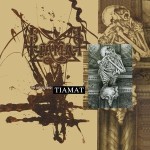 Clouds has always been an all time favorite. I know all the lyrics by heart since high-school and every single note and drum-beat on it. However, even the first time around I was torn between Clouds and The Astral sleep. The latter is a more obvious choice for a death metal list, because it is simply more brutal than Clouds. So, today I would go with The astral sleep, because it matches all the atmospheric excellence of Clouds, with songs like “Dead boys choir” and “The southernmost voyage”, but also contains dark claustrophobic hymns of desperation like “The mountain of doom” and “Ancient entity” (fucking masterpiece! That melody in the middle of the song always makes my skin crawl), as well as more up-tempo horror tales such as “I am the king of dreams”, “Sumerian cry (part III)” and “Lady temptress”.
Clouds has always been an all time favorite. I know all the lyrics by heart since high-school and every single note and drum-beat on it. However, even the first time around I was torn between Clouds and The Astral sleep. The latter is a more obvious choice for a death metal list, because it is simply more brutal than Clouds. So, today I would go with The astral sleep, because it matches all the atmospheric excellence of Clouds, with songs like “Dead boys choir” and “The southernmost voyage”, but also contains dark claustrophobic hymns of desperation like “The mountain of doom” and “Ancient entity” (fucking masterpiece! That melody in the middle of the song always makes my skin crawl), as well as more up-tempo horror tales such as “I am the king of dreams”, “Sumerian cry (part III)” and “Lady temptress”.
3. Dark Tranquility – The mind’s I (1997)
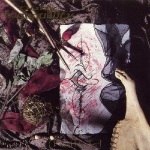 I bought this album when it first came out and I loved it since the first time I listened to it. I think that it has some of the best songs I have ever heard, some of the most inventive riffs ever, some excellent lyrics and brilliant performances. The drum sound and style (basically a very fast Slayer bass-snare drum beat with minimal use of fills throughout the faster songs) was obviously inspired from At The Gates‘ break-through album that came out a couple of years earlier. This more straight forward and in-your-face approach that Dark Tranquility took on this record appealed to me more than anything else they ever did (I also liked a lot Fiction which also had a very similar approach). The power in the beginning of songs like “Jodijackyl light” and “Scythe, rage and roses” is unparalleled. The amazing textures of songs like “Hedon” and the unique use of arpeggiated chords and harmonised melodies on top of muted, chunky riffs, have been genre-defining. Finally, the way most songs develop – like in the brilliant “Tongues”from Celtic-sounding tunes, slowly building up to a furious Slayer beat, on top of a sequence of awesome trademark triplets-riffs – is jaw-dropping.
I bought this album when it first came out and I loved it since the first time I listened to it. I think that it has some of the best songs I have ever heard, some of the most inventive riffs ever, some excellent lyrics and brilliant performances. The drum sound and style (basically a very fast Slayer bass-snare drum beat with minimal use of fills throughout the faster songs) was obviously inspired from At The Gates‘ break-through album that came out a couple of years earlier. This more straight forward and in-your-face approach that Dark Tranquility took on this record appealed to me more than anything else they ever did (I also liked a lot Fiction which also had a very similar approach). The power in the beginning of songs like “Jodijackyl light” and “Scythe, rage and roses” is unparalleled. The amazing textures of songs like “Hedon” and the unique use of arpeggiated chords and harmonised melodies on top of muted, chunky riffs, have been genre-defining. Finally, the way most songs develop – like in the brilliant “Tongues”from Celtic-sounding tunes, slowly building up to a furious Slayer beat, on top of a sequence of awesome trademark triplets-riffs – is jaw-dropping.
4. Unanimated – Ancient god of evil (1995)
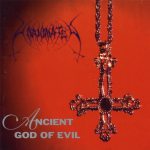 This is an album that I came to appreciate the last couple of years. I first listened to it around 1997. That proved to be an unfortunate time to listen to this particular album. By 1997, Swedish death metal had become saturated with countless At The Gates and Dark Tranquility wannabes, which were of far inferior quality (some, like Ablaze my sorrow disappeared, while others, like Soilwork, became quite popular). Anything melodic that I heard at that time was instantly rejected. Ancient god of evil was one of those albums, despite the fact that Rickard Cabeza and Peter Stjarnvind were in the band. Luckily, I recently decided to give it a listen and I was blown away. Now I consider it a masterpiece among classic Swedish albums. The trademark drumming of Peter Stjarnvind and the vocals of Micke Jansson bring into mind the mighty Merciless, while some of the fast tremolo-picking riffs bring into mind Dismember‘s and Desultory‘s more melodic moments. All the songs are built according to very simple structures (verse-chorus-verse-chorus) but are nevertheless very refreshing, owing much to the majestic and dark choruses and the singer’s soulful screams (listen for example, the “Eye of the greyhound“, the brilliant “Ruins” and “Dying emotions domain“). The textures are also quite lean. The rhythm guitar and the bass usually have the leading role, playing the same melody line. Many times rhythm guitar and bass are used to give color to the minimal melodies played by the lead guitar, a technique very common to the Swedish death metal genre. Harmonic progressions that would not be normally “accepted” early on in the genre – such as the “happy” i – VII – V used throughout “Life demise” or the i – VI – VII resolving back on home chord throughout “Oceans of time” – are quite common. Keyboards are also tactfully placed here and there to the effect of atmosphere without ever assuming a leading role. The background percussion bit halfway through “Ruins” sounds like something influenced by Rotting Christ‘s “Non serviam”.
This is an album that I came to appreciate the last couple of years. I first listened to it around 1997. That proved to be an unfortunate time to listen to this particular album. By 1997, Swedish death metal had become saturated with countless At The Gates and Dark Tranquility wannabes, which were of far inferior quality (some, like Ablaze my sorrow disappeared, while others, like Soilwork, became quite popular). Anything melodic that I heard at that time was instantly rejected. Ancient god of evil was one of those albums, despite the fact that Rickard Cabeza and Peter Stjarnvind were in the band. Luckily, I recently decided to give it a listen and I was blown away. Now I consider it a masterpiece among classic Swedish albums. The trademark drumming of Peter Stjarnvind and the vocals of Micke Jansson bring into mind the mighty Merciless, while some of the fast tremolo-picking riffs bring into mind Dismember‘s and Desultory‘s more melodic moments. All the songs are built according to very simple structures (verse-chorus-verse-chorus) but are nevertheless very refreshing, owing much to the majestic and dark choruses and the singer’s soulful screams (listen for example, the “Eye of the greyhound“, the brilliant “Ruins” and “Dying emotions domain“). The textures are also quite lean. The rhythm guitar and the bass usually have the leading role, playing the same melody line. Many times rhythm guitar and bass are used to give color to the minimal melodies played by the lead guitar, a technique very common to the Swedish death metal genre. Harmonic progressions that would not be normally “accepted” early on in the genre – such as the “happy” i – VII – V used throughout “Life demise” or the i – VI – VII resolving back on home chord throughout “Oceans of time” – are quite common. Keyboards are also tactfully placed here and there to the effect of atmosphere without ever assuming a leading role. The background percussion bit halfway through “Ruins” sounds like something influenced by Rotting Christ‘s “Non serviam”.
5. Arch Enemy – Black earth (1996)
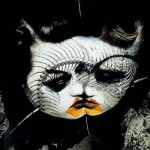 Arch Enemy’s first album is nothing short of a Swedish death masterpiece. Most death metal fans, myself included, would consider Michael Amott’s career a disgrace after Burning bridges (1999), but I don’t think there are a lot of people who would not acknowledge the brilliance of this first album. The big advantage of this album is Liiva’s powerful and emotional vocals. Liiva gives a truly unique performance. The album kicks off in a massive way with “Bury me an angel“, a song that successfully establishes the mood of the album as at once devastating and melodic. “Dark insanity‘s” furious D-Beat and Slayer-like melody after the chorus are astonishing. “Eureka” is a slow, unusual song built around a super heavy “pull-off” riff and a gratifying chorus. All songs are fucking amazing and I cannot even begin to think about which ones are my favorite. Special reference should be made, though, to the frantic “Transmigration macabre“, which starts with one of the heaviest riffs on earth, the also speedy “Cosmic retribution” which has an amazing clean-guitar passage near the end, and the melancholic and majestic “Fields of desolation” that closes the album, one of the best songs ever written.
Arch Enemy’s first album is nothing short of a Swedish death masterpiece. Most death metal fans, myself included, would consider Michael Amott’s career a disgrace after Burning bridges (1999), but I don’t think there are a lot of people who would not acknowledge the brilliance of this first album. The big advantage of this album is Liiva’s powerful and emotional vocals. Liiva gives a truly unique performance. The album kicks off in a massive way with “Bury me an angel“, a song that successfully establishes the mood of the album as at once devastating and melodic. “Dark insanity‘s” furious D-Beat and Slayer-like melody after the chorus are astonishing. “Eureka” is a slow, unusual song built around a super heavy “pull-off” riff and a gratifying chorus. All songs are fucking amazing and I cannot even begin to think about which ones are my favorite. Special reference should be made, though, to the frantic “Transmigration macabre“, which starts with one of the heaviest riffs on earth, the also speedy “Cosmic retribution” which has an amazing clean-guitar passage near the end, and the melancholic and majestic “Fields of desolation” that closes the album, one of the best songs ever written.
6. Afflicted – Prodigal sun (1992)
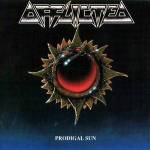 Afflicted evolved from being a brutal band in the style of early Entombed/Carnage/Grave in their demos/first E.P., to an uncompromising band that pushed the barriers of the genre in this, their first, album. With the exception of songs like “The empty word”, “In years to come” and “Consumed in flames”, where the D-Beat fury, grind and sheer brutality tend to be more prominent, the rest of the songs retain the extremity yet go down more technical/progressive paths previously explored by bands like Atheist, Atrocity (Germany) and Entombed to a new level and play with crazy structures and vocal ideas (the vocals are brilliantly insane), resulting in a thickly textured album with a very chaotic atmosphere. Especially the theatrical and flexible vocal delivery bring into mind Nicke Andersson on Clandestine and Alex Krull on Hallucinations. The beginning of “Spirit spectrum” sounds like something you could find in Atheist’s second album. Despite the inevitable influences, this album has a unique character and such variety that no matter how many years one listens to it there’s always new things to be discovered. The song “Ivory tower” closes the album in an unbelievable way! For those who love this album, make sure you check out Morbus Chron (they’ve got a new album coming up), a young Swedish band that sounds a lot like Afflicted.
Afflicted evolved from being a brutal band in the style of early Entombed/Carnage/Grave in their demos/first E.P., to an uncompromising band that pushed the barriers of the genre in this, their first, album. With the exception of songs like “The empty word”, “In years to come” and “Consumed in flames”, where the D-Beat fury, grind and sheer brutality tend to be more prominent, the rest of the songs retain the extremity yet go down more technical/progressive paths previously explored by bands like Atheist, Atrocity (Germany) and Entombed to a new level and play with crazy structures and vocal ideas (the vocals are brilliantly insane), resulting in a thickly textured album with a very chaotic atmosphere. Especially the theatrical and flexible vocal delivery bring into mind Nicke Andersson on Clandestine and Alex Krull on Hallucinations. The beginning of “Spirit spectrum” sounds like something you could find in Atheist’s second album. Despite the inevitable influences, this album has a unique character and such variety that no matter how many years one listens to it there’s always new things to be discovered. The song “Ivory tower” closes the album in an unbelievable way! For those who love this album, make sure you check out Morbus Chron (they’ve got a new album coming up), a young Swedish band that sounds a lot like Afflicted.
7. Carnage – Dark recollections (1990)
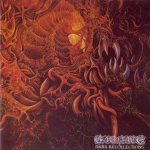 The reason I did not include this album in the initial list was that I always considered Carnage the early incarnation of Dismember. That is not entirely inaccurate, however Carnage was primarily Amott’s project (although I think that the band became a force to be reckoned with after Estby joined). In any case, it is such a fantastic album that I cannot just ignore it altogether. Dark recollections is about claustrophobic down-tuned insanity, sickly composed minor melodies, furious beating (that constantly shifts from Slayer-beat, to D-beat, to grind) while Karki vomits his guts screaming about horror and humanity’s demise. The lyric “In a century of darkness, the horror spreads within, when the planet stops to turn, all hope is lost for man”, off “Infestation of evil”, was used by Arch Enemy on their Stigmata album. (on “Infestation of evil” there is also the hilarious misheard lyric “trapped in the place, of no escape, eternally you are lost, you are eating FRIES!”.) The intro riff of “Deranged from blood” is classic Swedish death, as it was and as it was always supposed to be.
The reason I did not include this album in the initial list was that I always considered Carnage the early incarnation of Dismember. That is not entirely inaccurate, however Carnage was primarily Amott’s project (although I think that the band became a force to be reckoned with after Estby joined). In any case, it is such a fantastic album that I cannot just ignore it altogether. Dark recollections is about claustrophobic down-tuned insanity, sickly composed minor melodies, furious beating (that constantly shifts from Slayer-beat, to D-beat, to grind) while Karki vomits his guts screaming about horror and humanity’s demise. The lyric “In a century of darkness, the horror spreads within, when the planet stops to turn, all hope is lost for man”, off “Infestation of evil”, was used by Arch Enemy on their Stigmata album. (on “Infestation of evil” there is also the hilarious misheard lyric “trapped in the place, of no escape, eternally you are lost, you are eating FRIES!”.) The intro riff of “Deranged from blood” is classic Swedish death, as it was and as it was always supposed to be.
8. Death Breath – Stinking up the night (2006)
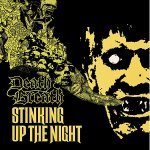 Andersson’s return to death metal happened in a big way. Enveloped by Robert Pehrsson on guitar and vocals, Magnus Hedquist on bass, Scott Carlson (Repulsion!) on vocals, Jorgen Sandstrom (ex-Grave, ex-Entombed) on vocals and Nicke on drums Death Breath could only be fantastic. Nicke’s genius shines through in compositions of unique inspiration such as the infectious groove of “Chopping spree” and “Christ all fucking mighty”, and the sheer power of “Heading for decapitation” and “Coffins…”. The times when Pehrsson gets the upper hand on composition the results are also excellent, especially in the mind-blowing “Flabby little things…” and “Reduced to ashes”. The Autopsy-inspired “Dragged through the mud” is somewhat less fascinating and “Morbid mind” is cool, but the Birdflesh-sounding chorus feels a bit out-of-place to me. The days when Nicke took death metal too seriously have been long gone. The lyrics on the album are a testament to this. Don’t get me wrong, the lyrics are phenomenal, better than most bands can imagine. However, they are brilliant in a Pungent Stench kind of way, clever but funny. “Christ all fucking mighty” is one of the best songs ever recorded.
Andersson’s return to death metal happened in a big way. Enveloped by Robert Pehrsson on guitar and vocals, Magnus Hedquist on bass, Scott Carlson (Repulsion!) on vocals, Jorgen Sandstrom (ex-Grave, ex-Entombed) on vocals and Nicke on drums Death Breath could only be fantastic. Nicke’s genius shines through in compositions of unique inspiration such as the infectious groove of “Chopping spree” and “Christ all fucking mighty”, and the sheer power of “Heading for decapitation” and “Coffins…”. The times when Pehrsson gets the upper hand on composition the results are also excellent, especially in the mind-blowing “Flabby little things…” and “Reduced to ashes”. The Autopsy-inspired “Dragged through the mud” is somewhat less fascinating and “Morbid mind” is cool, but the Birdflesh-sounding chorus feels a bit out-of-place to me. The days when Nicke took death metal too seriously have been long gone. The lyrics on the album are a testament to this. Don’t get me wrong, the lyrics are phenomenal, better than most bands can imagine. However, they are brilliant in a Pungent Stench kind of way, clever but funny. “Christ all fucking mighty” is one of the best songs ever recorded.
9. Merciless – Unbound (1994)
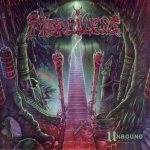 My first contact with Merciless happened through this album. I was hanging out to this friend’s house (who introduced me to some of my all time favorite bands, like Sinister, Altar, Desultory, Vader) and he put on the album. When the acoustic intro part of “Unbound” was over and the manic drumming on top of simple power-chords started, my friend started headbanging like crazy, as if he was about to jump out of his body (typical of him), a spectacle which actually increased the intensity of the music! From that moment on I was hooked on Merciless. I cannot think of many bands that can achieve this degree of intensity. Ridiculously fast riffing, Maidenesque melodies, insane screams and some folk tunes make up an amazing opening song. “The land I used to walk” is one of the most bad-ass songs ever to come out of Sweden; its rhythmic changes and the chorus are just brilliant. “Feebleminded” is an awesome in-your-face song typical of the style of music Merciless became known for. Their fast bass-snare drum beat is faster than most Death metal bands (maybe with the exception of Unleashed); some times it’s actually on the verge of becoming a blastbeat, and reminds a lot of Sadus. Peter Stjarnvind’s super tight drumming has never fitted equally perfectly in any of the other bands he played with. The slower songs on the album are also excellent. “Back to north” and especially “Lost eternally” are two gems of Swedish death.
My first contact with Merciless happened through this album. I was hanging out to this friend’s house (who introduced me to some of my all time favorite bands, like Sinister, Altar, Desultory, Vader) and he put on the album. When the acoustic intro part of “Unbound” was over and the manic drumming on top of simple power-chords started, my friend started headbanging like crazy, as if he was about to jump out of his body (typical of him), a spectacle which actually increased the intensity of the music! From that moment on I was hooked on Merciless. I cannot think of many bands that can achieve this degree of intensity. Ridiculously fast riffing, Maidenesque melodies, insane screams and some folk tunes make up an amazing opening song. “The land I used to walk” is one of the most bad-ass songs ever to come out of Sweden; its rhythmic changes and the chorus are just brilliant. “Feebleminded” is an awesome in-your-face song typical of the style of music Merciless became known for. Their fast bass-snare drum beat is faster than most Death metal bands (maybe with the exception of Unleashed); some times it’s actually on the verge of becoming a blastbeat, and reminds a lot of Sadus. Peter Stjarnvind’s super tight drumming has never fitted equally perfectly in any of the other bands he played with. The slower songs on the album are also excellent. “Back to north” and especially “Lost eternally” are two gems of Swedish death.
10. Hypocrisy – The fourth dimension (1994)
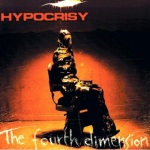 Hypocrisy’s Fourth dimension is probably the first album I heard from them, so it has a special place in my heart. It has an amazing atmosphere appropriately represented on the fascinating album cover art. Lyrically, this album moves away from satanic themes towards topics such as alien life, murder, religion and metaphysics. “Apocalypse”, the song with which the album kicks off, is an undisputed Epic, a unique homage to Eloy and Bathory, two diametrically opposite influences that only Tagtgren could combine with such astonishing results! Songs like this one, as well as “Fourth dimension” defined Hypocrisy’s trademark sound. “Reincarnation” is another brilliant, melancholic song that established Hypocrisy as the pioneers of atmospheric death metal. The awesomeness of some of the lyrics should also be pointed out: “Silence, the only sound is the knife through the air – Hell, is where I’ll be when I’m through with you”. The more up-tempo songs like “Mind corruption” (this song has an awesome tempo, riffs and vocal patters, I love it!), “Orgy in Blood” and “Reborn” showcase Hypocrisy’s thrash influences, especially in the case of intro-riffs. Each single song (maybe with the exception of “Slaughtered) is a masterpiece.
Hypocrisy’s Fourth dimension is probably the first album I heard from them, so it has a special place in my heart. It has an amazing atmosphere appropriately represented on the fascinating album cover art. Lyrically, this album moves away from satanic themes towards topics such as alien life, murder, religion and metaphysics. “Apocalypse”, the song with which the album kicks off, is an undisputed Epic, a unique homage to Eloy and Bathory, two diametrically opposite influences that only Tagtgren could combine with such astonishing results! Songs like this one, as well as “Fourth dimension” defined Hypocrisy’s trademark sound. “Reincarnation” is another brilliant, melancholic song that established Hypocrisy as the pioneers of atmospheric death metal. The awesomeness of some of the lyrics should also be pointed out: “Silence, the only sound is the knife through the air – Hell, is where I’ll be when I’m through with you”. The more up-tempo songs like “Mind corruption” (this song has an awesome tempo, riffs and vocal patters, I love it!), “Orgy in Blood” and “Reborn” showcase Hypocrisy’s thrash influences, especially in the case of intro-riffs. Each single song (maybe with the exception of “Slaughtered) is a masterpiece.
On the original post I once received a comment from a guy who decided that my choices were irrelevant and that I was not a “true old-school death metaler”. Back then, I explained that I did not pretend to be an old-school death metaler, whatever that means. I started listening to death metal in the mid-90s and my tastes were to a large extent shaped by the first death metal albums I heard (The dreams you dread by Benediction, Slaughter of the soul by At the gates, Victory by Unleashed, Massive killing by Dismember, Spiritual healing by Death) by the tastes of friends (Sarcofago, Dismember, Massacra, Carcass) and the suggestions of the Greek magazine Metal Hammer (Morbid Angel, Pestilence, Asphyx, Bolt Thrower, Massacre, Napalm Death, Entombed). That is why I always loved both the early brutal phase of Swedish death metal along with the later more melodic and experimental phase. I once again run the risk of being accused of being a wimp by including Dark Tranquility, Unanimated, Arch Enemy and Furbowl (four quite melodic bands), but that’s fine. If I had to make another list of Swedish death masterpieces I would include even more melodic albums, such as Massive killing capacity (Dismember), but also some brutal masterpieces, such as Therion‘s second album and Carbonized‘s For the security. Finally, from both lists I created, a specific type of Swedish death is missing, the more “Americanised” brutal Swedish death. Some of the best ambassadors of this style are the awesome Deranged, Seance and Vomitory. Although I have loved these bands since the late nineties, I always thought that they cannot compete with the traditional Swedish death sound.
Filed under: death metal, Whatever happened to...? | Tags: Andreas Axelsson, autopsy, Claes Holmberg, Death, death awaits, Dismember, Edge of Sanity, encyclopaedia metallum, Entombed, Grave, Jocke Ollund, Leprosy, Robban Karlsson, Rotten death, Scream bloody gore, swedish death metal, Tormented, you'll never see
People who know me know that I generally have the tendency to exaggerate about things. Whenever I talk about music, for example, I use the phrase “this is the best record ever!” every 30 seconds. However, I make a conscious effort to avoid being hyperbolic when I write in this blog or elsewhere. What I mean to say is that in this post I am not exaggerating when I say that in the year 2013 Tormented is, in my opinion, the best Death Metal band from Sweden.
I have only known Tormented for a few months. One day I was wondering what happened to Andreas Axelsson, of the mighty Edge of Sanity. Edge of Sanity is a band that I have loved since the mid-90s when I started listening to death metal. The first album I ever listened from them was the newly released Crimson. I was instantly hooked. While throughout the years Swano’s various endeavours were noticed by the media (including his dreadful resurrection of Edge of Sanity in 2003) the rest of the band – namely Andreas Axelsson, Sami Nerberg, Anders Lindberg, Benny Larsson and Robban Karlsson – was nowhere to be seen. It should be noted that Swano was not the mastermind behind Edge of Sanity. Axelsson and the rest of the band contributed equally to make Edge of Sanity one of death metal’s finest. Using the invaluable online source Encyclopaedia Metallum, I found out that Axelsson formed the death metal band Tormented in 2008. Axelsson plays guitar and sings in Tormented and he is enveloped by Robban Karlsson (who sang in the excellent Cryptic after Swano’s departure) on bass, Jocke Ollund on drums and Claes Holmberg on guitar.
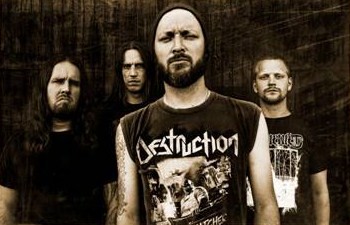 Robban is clearly disgusted with the photo-shoot session
Robban is clearly disgusted with the photo-shoot session
It is hard to describe how much I like this band. As a person who has been longing for good old Swedish death metal for more than a decade I cannot describe what pleasure it has been to find out about this band. It is well known that since the late 90s several bands have tried to recapture the feeling of old school Swedish death metal. I remember Repugnant with their Hecatomb E.P. as one of the first bands that tried to resurrect Death metal’s rotten corpse. Bands that followed include the now popular Bloodbath and the now defunct Kaamos and Chaosbreed. None of these bands really cut it for me. The Hecatomb E.P. was pretty amazing brutal and dirty death metal and Bloodbath’s first CD was also pretty cool albeit too polished and the voice sounded too fake. Most of the bands that followed, however, I found ridiculous until the glorious arrival of Death Breath in 2006. However, even with Death Breath and although Andersson’s compositions are some of the best I have ever listened (check this out and this), some of Pehrsson’s songs felt to me kind of forced. Some other bands like Interment, Evocation and Entrails, whose origins are in the first wave of Swedish death metal but never released a record back then and have recently reformed, again do not impress me. Truth be told, these three bands are loyal to the old school and their music is honest and really good. However, to my ears they are nothing more than first-class Dismember and Entombed clones. As far as the veterans go, and as much as I like the albums that Dismember and Entombed released during the last decade, I cannot help but feel that there is something missing. In other words, I thought that I would never again get the feeling I used to get from listening to Swedish death metal when I was young.* Enter Tormented…
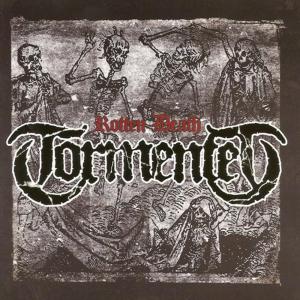 Tormented’s first album, Rotten Death (2009), is a fucken masterpiece of old school death metal. It is as if not even one day has passed since Leprosy came out. To my ears, Tormented’s debut is a tribute to Death‘s first two albums, Scream Bloody Gore (1987) and Leprosy (1988), but with a punk attitude. It is a galore of fast tempos, catchy choruses, creeping rotten slow passages and minimal haunting melodies over an angry voice that growls about gore and death. And the best thing is that it does not feel forced! It feels natural! One of the most amazing moments is on the song “Death owns the night“. Near the middle of the song (at 1:35) the raging tempo gives way to a more restrained passage where Andreas sings “his work is perfection and his art is to kill, deadly dissection, it is your blood he’ll spill”. This passage is boiling with tension which eventually erupts into an amazing riff and the chorus. The genius of this song is that the specific verse appears later on in the song but this second time the drummer keeps the fast Slayer beat. I doubt that any old death metal fan can listen to this part without going berserk! In the same song the band pays tribute to Death’s song “Leprosy” with the lyric “with deadly force they’ll take control and bring you to your death”. Another awesome part is on the super fast song “Come back from the dead“. The part I refer to is the way Andreas sings the lyric “a sea of flames is where he drowned” and the ensuing auditory massacre. The album closes with the masterpiece called “Reversed funeral” which also pays tribute to the old school of Swedish death metal by name-dropping Entombed, Dismember, Unleashed, Grave, Merciless and Unanimated. This album is, in three words, relentless, powerful and enjoyable.
Tormented’s first album, Rotten Death (2009), is a fucken masterpiece of old school death metal. It is as if not even one day has passed since Leprosy came out. To my ears, Tormented’s debut is a tribute to Death‘s first two albums, Scream Bloody Gore (1987) and Leprosy (1988), but with a punk attitude. It is a galore of fast tempos, catchy choruses, creeping rotten slow passages and minimal haunting melodies over an angry voice that growls about gore and death. And the best thing is that it does not feel forced! It feels natural! One of the most amazing moments is on the song “Death owns the night“. Near the middle of the song (at 1:35) the raging tempo gives way to a more restrained passage where Andreas sings “his work is perfection and his art is to kill, deadly dissection, it is your blood he’ll spill”. This passage is boiling with tension which eventually erupts into an amazing riff and the chorus. The genius of this song is that the specific verse appears later on in the song but this second time the drummer keeps the fast Slayer beat. I doubt that any old death metal fan can listen to this part without going berserk! In the same song the band pays tribute to Death’s song “Leprosy” with the lyric “with deadly force they’ll take control and bring you to your death”. Another awesome part is on the super fast song “Come back from the dead“. The part I refer to is the way Andreas sings the lyric “a sea of flames is where he drowned” and the ensuing auditory massacre. The album closes with the masterpiece called “Reversed funeral” which also pays tribute to the old school of Swedish death metal by name-dropping Entombed, Dismember, Unleashed, Grave, Merciless and Unanimated. This album is, in three words, relentless, powerful and enjoyable.
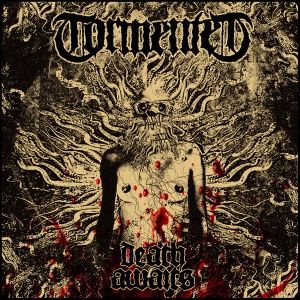 Their second album, Death Awaits (2013) is equally amazing. The main difference between Rotten Death and Death Awaits is that the latter is much slower. If I had to compare it to an old school Swedish death metal album, that would be Grave‘s You’ll Never See (1992). On this album Tormented keep the Leprosy-era recipe of death metal combined with the heaviness and brutality of early Swedish death metal. Again the freshness of these songs is unbelievable. Every single song has awesome vocal patterns – which, by the way, are less repetitive than on their first album – and really cool structures. The way each song develops brings joy to my ears. I don’t know if that suggests that I’m just happy because a band simply managed to meet my expectations by successfully following a well trodden musical path, or whether they really enjoy what they do which is then reflected in the music. What I can say is that these songs make me feel good! The album kicks off with a song that changes moods, starting with a majestic heavy intro, moving on to a thrashy vibe which reminds of post-Morning Star Entombed and Death Breath and eventually settling to a slow and heavy apocalyptic section dragging until the end. The two very fast songs on the album, namely “Blood orgy” and “Black sky” are classic relentless death metal songs with excellent vocal patterns, buzzing fast-picking and cool choruses. The more mid-tempo/D-beat tempo songs are my favorite on the album. “Incantations of the dead” has a main riff that reeks of early Entombed, nice rhyming lyrics, and an awesome bridge that builds to the redemptory melody of the chorus. Right after the second chorus the song goes into a brilliant slow crawling section typical for Swedish death metal. “Insane with dread” is another awesome song with a driving tempo, a tense bridge, a catchy chorus and a slow section with a powerful chord progression. “Into the crypts of death” is another brilliant mid-tempo song with an amazing opening riff, a rotten main riff, a bridge which breathes Swedish death into the song, leading once again to an awesome chorus and a brutal slow section. The album closes – like their previous album – with a majestic song called “In the presence…“. The opening riff and chorus give a blackened quality to the song and the main riff is classic Autopsy (hear for example, “Ridden with disease“). This album is, in three words, majestic, powerful and enjoyable.
Their second album, Death Awaits (2013) is equally amazing. The main difference between Rotten Death and Death Awaits is that the latter is much slower. If I had to compare it to an old school Swedish death metal album, that would be Grave‘s You’ll Never See (1992). On this album Tormented keep the Leprosy-era recipe of death metal combined with the heaviness and brutality of early Swedish death metal. Again the freshness of these songs is unbelievable. Every single song has awesome vocal patterns – which, by the way, are less repetitive than on their first album – and really cool structures. The way each song develops brings joy to my ears. I don’t know if that suggests that I’m just happy because a band simply managed to meet my expectations by successfully following a well trodden musical path, or whether they really enjoy what they do which is then reflected in the music. What I can say is that these songs make me feel good! The album kicks off with a song that changes moods, starting with a majestic heavy intro, moving on to a thrashy vibe which reminds of post-Morning Star Entombed and Death Breath and eventually settling to a slow and heavy apocalyptic section dragging until the end. The two very fast songs on the album, namely “Blood orgy” and “Black sky” are classic relentless death metal songs with excellent vocal patterns, buzzing fast-picking and cool choruses. The more mid-tempo/D-beat tempo songs are my favorite on the album. “Incantations of the dead” has a main riff that reeks of early Entombed, nice rhyming lyrics, and an awesome bridge that builds to the redemptory melody of the chorus. Right after the second chorus the song goes into a brilliant slow crawling section typical for Swedish death metal. “Insane with dread” is another awesome song with a driving tempo, a tense bridge, a catchy chorus and a slow section with a powerful chord progression. “Into the crypts of death” is another brilliant mid-tempo song with an amazing opening riff, a rotten main riff, a bridge which breathes Swedish death into the song, leading once again to an awesome chorus and a brutal slow section. The album closes – like their previous album – with a majestic song called “In the presence…“. The opening riff and chorus give a blackened quality to the song and the main riff is classic Autopsy (hear for example, “Ridden with disease“). This album is, in three words, majestic, powerful and enjoyable.
It is true that Tormented do not attempt to break any new ground with their music. It is also true that their style of Swedish death metal is not even as evolved as Dismember’s first two albums (1991, 1993), Entombed’s Clandestine (1991) or At The Gates’ With fear… (1993). However, an album such as Clandestine is a mystery still to this day. It is impossible to grasp its perfection. So, it would not be fair to judge other bands on the basis of trying to surpass something so indisputably perfect. Axelsson himself has been involved in albums of sheer perfection in the past – Unorthodox, Spectral…, Purgatory…, Crimson, Cryptic – that took the genre much farther from where Tormented are today. However, what Tormented do should not be underplayed. They credibly compose and perform utterly awesome death metal with passion, conviction and no gimmicks. In this sense, they are the contemporary leaders of true Swedish death metal.
*Desultory‘s comeback album Counting our scars is an exception, as I consider it a masterpiece of Swedish death metal (check this out). They haven’t been active lately. Hopefully they will not fold again.
Filed under: brutal memoirs, death metal, gigs, Greece, people | Tags: break up, David Blomqvist, Dismember, Fred Estby, Greece, Martin Persson, Matti Karki, Metal Era, Richard Cabeza, Robert Sennebaeck, rock city, Thomas Daun, Tobias Christiansson
Dismember has been my all time favorite band since the mid 90s. I discovered death metal through the sounds of Dismember and other great Swedish bands such as Unleashed, At the gates and Grave. The first record I heard was the back then newly released Massive Killing Capacity. The impact of this album is probably much bigger than I can perceive. I remember getting a guitar on my hands in order to learn to play the opening riff of “Collection by blood”. It further increased my already significant obsession with learning as much trivia as possible about bands. Categories started forming in my head about each individual member’s composing style. Within a few years and when a new album was coming out I could tell with certainty who had writen which song without even looking at the inner sleeve or booklet.
I passionately defended Dismember among my peers when I was hearing criticisms such as that they sounded like Entombed. I hated reviewers in music zines because they would come up with ridiculous reasons to compare them to Entombed. I remember asking the late Nikos Tagalos (of Sadistic Noise ) in the old Rock City (also RIP) whether Pieces was any good:
Tagalos: “what have you heard of them?”
Me: “Like an ever flowing and Massive killing”
Tagalos: “more brutal than both of them”.
One day in the summer of 1997 I spent all day in Metal Era with Jim (ex-Rotting Christ bass player) and his friends while waiting for the very first vinyl copies of Death Metal to arrive. I remember the day I listened to the promo-cd of Hate Campaign and I run home to tell my friends about it. The freezing day I streamed the song “where ironcrosses grow” before the release of the album (it was Sunday and it had snowed).
I got to see Dismember live in the summer of 2005, with a ticket my friend Joan gave me as a present for my birthday. I had the honour of meeting Matti, David and Fred on that day. I was super excited for meeting my heroes, them for seeing a fan with a Dismember tattoo on his arm. The concert was like a dream that came true. They even played Reborn in Blasphemy!
After the departure of Fred, I knew that the future of the band would be uncertain. Fred was the motivator, an important composer and the producer. Of course, one of the things I always liked about and respected Dismember for, was that it was not an one-man band. Every album was a collective effort. And before Fred left, I was equally bummed out about the departures of Robert and Rickard, both of whom are amazing composers.
Then I saw the band again in 2007 in Thessaloniki during a one-day trip. I ended up spending the night sleeping at the entrance of a building because I spent all my money on records. The show was again amazing and I got to meet Tobias and again Matti and David. I also saw David around 12 o clock at night wandering around the streets of Thessaloniki looking for his hotel. I explained to him that he was going the wrong way and suggested he should get a taxi. He asked me how much it would cost because he was worried that the taxi driver would rip him off, and he had a point…
Dismember seemed to me like a band which had a very laid back work ethic, which is something I respect greatly. It was also a very humble band and having met them I can say that they were not taking themselves very seriously and their primary goal was to have fun and play music they enjoyed. They survived a period very difficult for extreme music (mid- to late-90s) and they did so with dignity. Ok they got a bit more melodic as time went by… but one can see those melodic elements even in their early works. They had always been more into melody than their contemporaries.
In a period of 20 years they offered the world some of the most beautiful music ever created, some phenomenal lyrics and some of the most powerful and extreme executions. They certainly co-defined what swedish death metal means. They consistently released flawless albums, a feat that only a handful of bands have managed to pull off. A week ago they anounced that they will call it quits. This post is an opportunity for me to thank them for being such an inspiring part of my childhood and adult life.
Filed under: brutal memoirs, death metal, Greece, people, social theory | Tags: asphyx, Athens, benediction, bolt thrower, counter-culture, Death, death metal list, Deicide, Dismember, Efkarpidis, Entombed, Greece, Happening record store, Malevolent creation, Massacre, Metal Hammer, Morbid Angel, napalm death, obituary, pestilence, rock city, subculture, Taggalos, Unleashed
In the mid-nineties in Greece internet had not yet proliferated everyday life. There were only a few homes with access to internet and, in any case, the internet was still a baby. Tape trading was still the dominant mechanism for the sharing of music. However, me and my close friends did not really want to be a part of the (death) metal sub-culture. We considered most metalheads stupid and that they were listening to the wrong kind of music. We had built our own counter-culture in which we found th devil-horns sign silly, we did not like some of the more established metal bands, especially the ones that were more established in Greece, and we refused to take part in some of the metal rituals, such as hanging out in metal clubs. Partially that was happening because we prefered to spend our limited allowances on records than coffee or beer. So our small musical network back then was comprised of 4-5 kids from school. Part of this network were the older brother of one of my friends, the older cousin of another friend and 2 kids from another town (Volos) that were friends with one from our group.
This was a particularly small network, even if you account for the fact that the two kids from Volos had more connections that were indirectly connected with us. However, that allowed us to experiment with buying records that were more obscure and more importantly, it allowed us to really appreciate and cherish the few albums that were going around.
Of course, the social construction of what constitutes Death Metal did not take place exclusively within the confines of our small group. One early guide to death metal came from the greek metal hammer magazine. In 1996 the greek metal hammer published a list of what the editors considered the 15 best death metal albums of all time. That list guided me and my friends on our first explorations of the death metal scene. Although we were already listening to some death metal like Benediction, Dismember, Unleashed, At the gates, Sarcofago and Death our knowledge beyond these bands was very limited. That list was therefore particularly helpful, since it shaped to a large extent our ideas about what death metal is and how it should sound like.
The albums on that list included: Altars of Madness (Morbid Angel), Transcend the Rubicon (Benediction), Indecent and Obscene (Dismember), Clandestine (Entombed), Heartwork (Carcass), Maleus Maleficarum (Pestilence), Last one on Earth (Asphyx), For Victory (Bolt Thrower), From Beyond (Massacre), Cause of Death (Obituary), Harmony Corruption (Napalm Death), Across the Open Sea (Unleashed), The Ten Commandments (Malevolent Creation), Leprosy (Death), Deicide (Deicide). I have this strange feeling that either Onward to Golgotha, Dawn of Possession or the Bleeding were also included but I cannot be sure since I have unfortunatelly lost this issue. Anyway, this list reflected the subjective tastes of the magazine’s editors, I am guessing Taggalos and Efkarpidis were among them. Although later on I came to hate Metal Hammer and all attempts on evaluating music according to personal criteria that assume are universal, I cannot deny the fact that this list was a beginners’ guide and introduction to a very time-and-place-specific death metal sub-culture.
I remember buying some of these albums on cassette because they were cheap and we did not fully trust metal hammer. Back then Happening, one of Athens’ largest record stores, was still around but the undisputed metal record stores were the two Rock City stores, particularly the underground one on Akadimias street. The symbolic elements that made this store so loved, like the fact that it was in a basement, the dark walls, suffocating atmosphere and the metalic black cd -racks were all lost after the store moved further down the street and was refurbished to look fancy and new. From the underground store, I bought some of the cassettes I saw on that list, such as Maleus Malleficarum and Last one on earth for 950 drachmas (around 2 quid). The cassette series was an invitation to further experimentation with bands like Gorefest, Paradox, Tiamat, Gorguts and others.
Almost 15 years and hundreds of albums have passed since and I still think that this is a pretty damn good list. It contains important representatives from different schools (Swedish death metal, american death metal, british death metal and European death metal). This list also reflects the values of death metal fans in greece at that period. Among the albums there is only one that would fall under the technical death metal categroy, Heartwork by Carcass. Altars of Madness is also technical for sure, but what sticks out is the brutallity. Most other albums on that list are extremely crude, dark and brutal. Furthermore, one can find albums that would never make it in a similar list today! I doubt it that today’s death metal fans would appreciate any albums by bands like Asphyx, Bolt Thrower or, especially, Benediction. Now I’ll get back to listening to Last one on Earth and be amazed by the heaviness and phenomenal lyrics of Martin Van Drunen.




